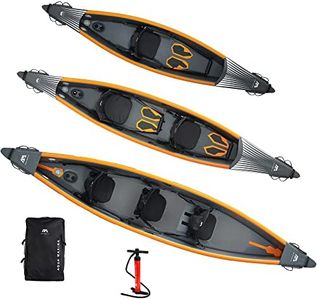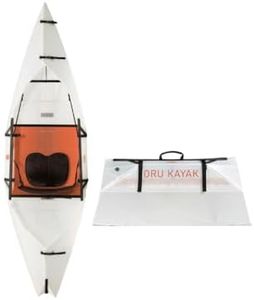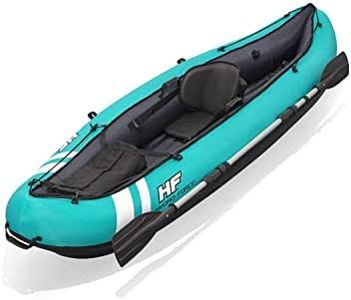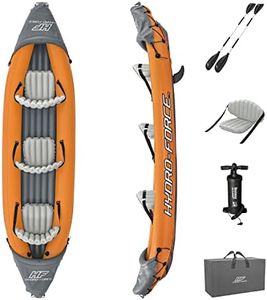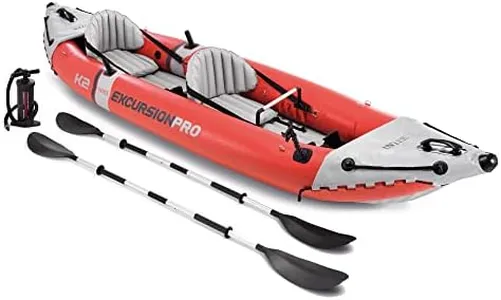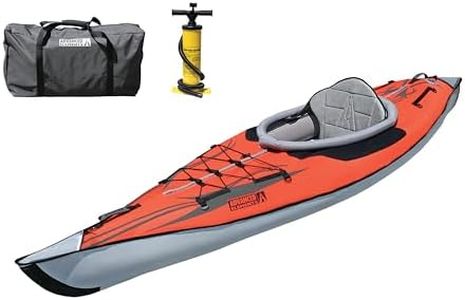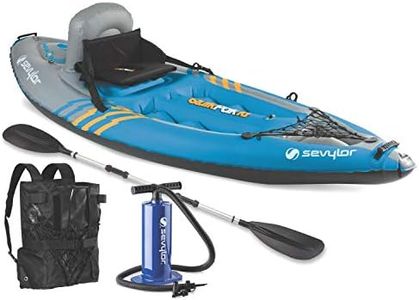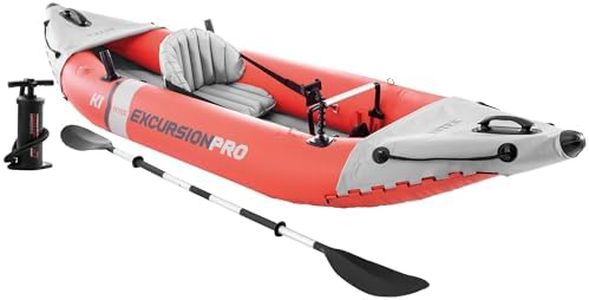We Use CookiesWe use cookies to enhance the security, performance,
functionality and for analytical and promotional activities. By continuing to browse this site you
are agreeing to our privacy policy
10 Best Kayaks For Beginners
From leading brands and best sellers available on the web.Buying Guide for the Best Kayaks For Beginners
Choosing your first kayak is an exciting step towards enjoying water adventures. As a beginner, you'll want a kayak that feels stable, is easy to paddle, and fits the kinds of water and activities you’re interested in. Spend a little time thinking about where you’ll use it most—calm lakes, slow rivers, or maybe gentle coastal waters. Comfort and safety should be top priorities, so focus on models designed specifically for newcomers. A kayak that is easy to get in and out of, light enough to move around, and stable in the water will make your first paddling experiences much more enjoyable.Type (Sit-On-Top vs Sit-Inside)This refers to the basic shape and design of the kayak. Sit-on-top kayaks have an open design and you sit on top of the boat, while sit-inside kayaks have a cockpit you sit inside. Sit-on-tops are generally more stable and easier to get in and out of, making them a favorite for beginners, warmer climates, and casual paddling. Sit-inside kayaks provide a bit more protection from splashes and can feel more secure in cooler waters, but might feel confining for new users. Think about your comfort level with water and how easy you want entry and exit to be when deciding.
LengthThe length of a kayak affects how it moves in water. Shorter kayaks (about 8-10 feet) are easier to handle and turn, which is great for beginners, kids, or anyone out on calm, smaller bodies of water. Medium lengths (10-12 feet) offer a good balance between maneuverability and tracking, making them suitable for lakes and slow rivers. Longer kayaks (over 12 feet) travel straighter and faster, designed more for experienced paddlers covering long distances. If you’re just starting out and sticking to easy water, a shorter or medium kayak is often the most friendly choice.
WidthWidth is an important factor for stability. Wider kayaks offer more stability and are less likely to tip over, which helps new paddlers feel secure. Standard beginner kayaks often range from about 28 to 34 inches wide. Narrow kayaks move faster and track straighter but can feel tippy to beginners. If stability is your main concern—especially if you’re nervous or will be using the kayak for fishing or photography—a wider model will help you feel comfortable.
Weight CapacityThis tells you the total weight the kayak can carry, including your body weight and any gear you bring along. It’s important not to overload a kayak, as this can make it unstable and harder to paddle. Always check the kayak’s specified capacity, and choose one that comfortably accommodates you plus anything you plan to bring (like a life jacket, cooler, or backpack). Beginners should allow some extra margin for comfort and stability.
MaterialBeginner kayaks are typically made from plastic, which means they are durable and can handle bumps and scrapes. Some more expensive kayaks are made from lightweight materials, but for beginners, a robust plastic build is often best as it handles learning mishaps well. If you plan to move your kayak by yourself, look for lighter models within the plastic category, as these are easier to carry and transport.
Hull ShapeThe hull is the bottom of the kayak and its shape greatly affects stability and movement. Flat hulls offer the most stability, making them great for new paddlers or calm water. Rounded or V-shaped hulls are faster and track better but can feel tippier, so they’re usually chosen by more experienced users or those aiming for speed. For beginners, a flat or gently rounded hull gives a friendly, forgiving feel.
Seat Comfort and AdjustabilitySince you may spend hours in your kayak, a comfortable seat is essential. Adjustable seats and backrests help you find a position that supports your back and legs, reducing fatigue and discomfort. Beginner kayaks often have basic but padded seats; for longer outings, look for extra adjustments or added comfort features.
Portability and WeightHow heavy and easy to carry your kayak is will influence how often you use it. Lightweight models make it simpler to load onto a car, carry to the water, and store when not in use. If you’ll often transport or store the kayak alone, aim for a manageable weight. Consider also if the kayak has carry handles, which make moving it around much easier.
